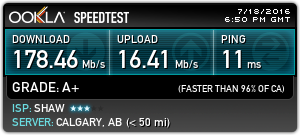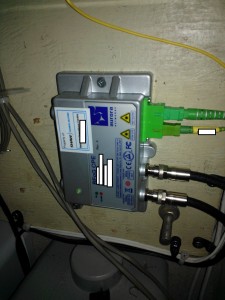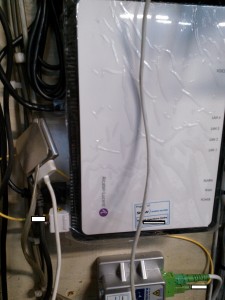There’s quite a few of us that started off deploying Small Business Server (SBS2008, SBS2011) environments back in the day, loving the handy all-in-one package taking care of everything from Active Directory and Exchange, to disaster recovery and business continuity. However, some of these old environments are starting to catch up with us. I wanted to open a discussion on a big issue I had a couple years ago in one of my first migrations from SBS 2008, to Windows Server 2012 R2 with the Essentials Experience role installed, with Exchange Server 2013.
As most of you know, SBS comes packaged to push “.local” domains on initial domain configuration. This used to be considered best practice, and most of us even configured .local’s on non-SBS environments. This has never really posed any problems for us I.T. guys, except for a few configuration considerations when setting up Outlook clients, DNS, etc…
Now if you’re like me, another thing I always configured, was user accounts that didn’t match e-mail addresses. An example would be “John Doe”, with the username of “JohnD”, and the e-mail address of “[email protected]”. Also, our buddy John Doe would have a AD UPN [email protected] (this was automatically populated on user setup)
User’s Name: John Doe
SAM Account Name: INTERNALDOMAIN\JohnD
Username: JohnD
AD UPN: [email protected]
E-mail Address: [email protected]
I always liked this as it provided some protection if the users password ever got compromised (in a phishing attack, fake e-mail logon page, etc…), as the password could not actually authenticate when using the e-mail address as a username (the username was never actually provided in the attack, only e-mail).
Now let’s flash forward to this migration from SBS 2008, to Windows Server 2012 R2 with Essentials Experience, and throw Exchange 2013 in to the mix. Right off the bat, everything is working fine, Outlook 2010 is working great, Outlook 2013 is working great. Then BAM, Outlook 2016 comes out!
Outlook 2016 does not allow manual or custom configuration of Exchange accounts. They do this for “reliability” and ease of configuration. This means that you HAVE to have autodiscover setup, and working fluidly. No more manual configuration. Internally inside of the LAN this is all automatic if you configured Exchange properly, but you will have to configure autodiscover externally.
Internally on the LAN, Outlook 2016 clients have absolutely no issues, and authentication is working fine (no password prompts). However, when configuring external users, while you can eventually get it configured, the user is constantly prompted for credentials on every Outlook start.
On these password prompts, you’ll notice it’s authenticating for the users e-mail address. In this example, it’s asking for “[email protected]” and you enter: “INTERNALDOMAIN\JohnD” and their password, it work for the session, but keeps prompting on every fresh Outlook start.
I did massive amounts of research and seriously I could not come across one article that actually provided all the information I needed, it almost seemed as if this problem was specific to this single environment. Of course, this makes me think I have something configured incorrectly, and I literally spend forever searching for information, checking my VirtualDirectories on my Exchange server, checking logs, wasting tons and tons of time.
Finally after checking my configurations 6-10 times each and spending weeks, I realized it had nothing to do with anything configured incorrectly.
Outlook 2016 does all the configuration automatically, and expects to find everything it needs via auto discover. Putting it simple, the user’s UPN must match their e-mail address.
This means we have to change John Doe’s Active Directory UPN to match his e-mail address. The SAMAccountName still remains the same, so his login to his computer will not change, however after the change he will now be able to log in both with INTERNALDOMAIN\JohnD and [email protected].
First we have to add the UPN suffix (which is the actual e-mail address domain name) to the Active Directory Domain and Trusts. Instructions are available here: https://support.microsoft.com/en-us/kb/243629. Please note Microsoft has since deleted the original knowledge base article so I created a blog post to outline the instructions here: https://www.stephenwagner.com/2018/10/16/how-to-add-an-alternative-upn-suffix-to-an-active-directory-domain/.
After adding your e-mail domain to the UPN suffix list. When you go in to “Active Directory Users and Computers”, and view a user’s properties, you’ll notice in the UPN section, you can drop it down and change it from internaldomain.local, to contoso.com (using my example domains). You can also change the username inside of the UPN.
Essentially for Johny boy, his AD properties window now looks like:
User Logon Name:
[email protected] (we changed the name, and chose the external domain in the drop down to the right)
User logon name (pre-Windows 2000):
INTERNALDOMAIN\ JohnD (we left this the way it was)
John can now login either using “INTERNALDOMAIN\JohnD” or “[email protected]”. As far as John is concerned we haven’t changed anything and he still logs in using the same format he always has, totally unaware of any changes.
Surprise surprise, autodiscover is now fully functioning for this user. Not only for easy configuration on mobile devices (iPhones, Windows Phones, etc…), but he can now load up Outlook 2016 away from the LAN on the Internet, type in his e-mail address, password, and BAM he’s good to go!
I am a little bit unsettled in the fact that the e-mail address now becomes a fully accepted username on the domain (for security reasons), but I guess we’re stuck with that!
In short, our problem is:
- Username doesn’t match e-mail (JohnD username, [email protected] email)
- Running Outlook 2016 and forced to use auto-discover, repeated password prompts
- Running .local domain internally, while using different domain externally
In Short, to fix this:
- Add UPN Suffix to Active Directory
- Change users properties so that UPN matches e-mail address, DO NOT CHANGE the old DOMAIN\Username setting
Other Considerations:
- Password prompts on Outlook clients can mean a whole bunch of different problems totally unrelated to this configuration and issue. Always fully diagnose the issue and confirm the issue before applying fixes. Password prompts can mean authentication problems, problems with Exchange’s virtualdirectories, issues with autodiscover, issues with certificate configuration, etc…
- If this is your specific issue, you can write a script to run through and update the UPNs on all the accounts. I generally don’t like scripts touching user accounts, so I’m slowly rolling out these changes per user when upgrading them to Outlook 2016. Doing this one by one as we upgrade, allows us to make sure that none of their mobile devices are affected by the UPN change.
- Since we are changing UPNs, this could have a major effect on any 3rd party applications that integrate with Active Directory that use UPNs. Always test, and make sure you don’t break any integration points to your 3rd party applications or line of business systems.







